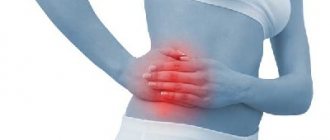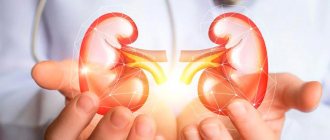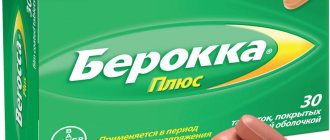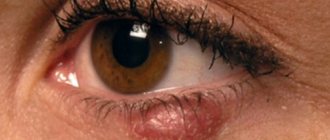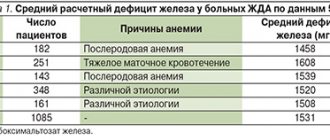Compound
| Capsules | 1 caps. |
| active substances: | |
| fumifera medicinal herb dry extract | 275.1 mg |
| (corresponding to 4.13 mg of total fumaric alkaloids calculated as protopine) | |
| milk thistle fruit extract dry | 83.1 mg |
| (corresponding to 50 mg silymarin, including at least 22 mg silybin) | |
| excipients: MCC - 80.1 mg; corn starch - 20.1 mg; talc - 8.4 mg; macrogol 6000 - 4.5 mg; copolyvidone - 4.5 mg; magnesium stearate - 2.1 mg; silicon dioxide - 2.1 mg | |
| capsule shell: gelatin - 79.94 mg; iron oxide yellow - 0.67 mg; iron oxide red - 0.15 mg; iron oxide black - 0.04 mg; titanium dioxide - 1.29 mg; purified water - 13.92 mg |
results
An analysis of patient complaints during the first visit showed that a feeling of heaviness and discomfort in the right hypochondrium bothered 30 patients (severity - from 2.9 to 7.7 points), pain in the right hypochondrium occurred in 16 (severity - from 3.3 to 6.9 points). Signs of gastric (nausea, a feeling of bitterness in the mouth, a feeling of heaviness and fullness in the epigastrium) and intestinal (rumbling, transfusion in the intestines, stools with a tendency to constipation) dyspepsia were noted in 23 cases (severity - from 2.1 to 5.6 points). 11 patients had signs of asthenic syndrome (weakness, fatigue, irritability, decreased performance).
According to anamnestic data, the duration of the disease ranged from one year to 7 years. In 28 patients, according to a retrospective analysis of outpatient records, the increase in transaminase levels was transient over several years. In all patients, in the last 6–12 months before inclusion in the study, there was a stable increase in the levels of AST, ALT and GGTP by 1.5–2.5 times.
Of the associated diseases, it is first necessary to highlight ischemic heart disease and arterial hypertension (22), type 2 diabetes mellitus (8), chronic gastroduodenitis (24) and peptic ulcer disease (9).
On physical examination, 8 patients showed an increase in liver size, 18 patients had moderate pain on palpation of the right hypochondrium, and positive Murphy and Ortner symptoms. Pain in the epigastrium was noted in 8 cases. Abdominal obesity was diagnosed in 13 patients (body mass index ≥ 30.0 kg/m²).
In general blood and urine tests, no diagnostically significant changes were noted, while biochemical blood tests showed an increase in the levels of AST, ALT and GGTP (Table 1).
. Results of biochemical blood tests over time.
In all cases, ultrasound examination (Fig. 1) revealed signs of SP of varying severity (Table 2), while at the same time, no echographic symptoms of acute hepatitis or cirrhosis were recorded in any observation. During the examination, hypomotor dyskinesia of the gallbladder was diagnosed in 15 patients, signs of chronic cholecystitis (induration, wall thickening more than 3 mm) in 7, cholesterosis of the gallbladder in three (multiple polyps were visualized in two).
Magnetic resonance imaging (Fig. 2), performed in 18 patients, also recorded signs of SP. Esophagogastroduodenoscopy revealed no signs of exacerbation of peptic ulcer disease or erosive-ulcerative lesions.
Thus, the diagnosis of SP was established in 3 cases, alcoholic FH – in 10; 19 patients had NASH and one had drug-induced hepatitis.
The effectiveness of treatment was assessed according to the following parameters: improvement in the subjective well-being of patients (reduction in the severity of symptoms in points); significant improvement in laboratory (primarily biochemical) parameters; positive dynamics of ultrasonography data of the hepatobiliary system. The safety of treatment was assessed based on patients' subjective tolerability of the drug Gepabene.
Thirty patients completed the study (three were excluded from the protocol because they did not show up for the interim visits at 4/8 weeks). At the follow-up visit on day 120, a physical examination did not reveal any significant abnormalities, as did clinical blood and urine tests. In all cases, it was possible to relieve pain in the right hypochondrium; a feeling of heaviness in the right hypochondrium persisted in 5 patients, but the severity of the symptom was significantly lower (up to 2.4 points) than before treatment. Signs of gastric or intestinal dyspepsia persisted in 7 cases (with a maximum severity of up to 3.6 points). Compliance with a rational diet led to a weight loss of 1.5–3.5 kg in 7 patients.
A control ultrasound examination of the liver did not reveal a significant improvement in the echographic picture, and when determining the function of the gallbladder, normalization of its motility was recorded. Positive dynamics were achieved in biochemical blood parameters (Table 2).
The drug was well tolerated; the only side effects noted were slight loosening of stool in three patients, which did not prevent them from completing the course of treatment. Taking the drug did not affect the course of concomitant diseases.
Pharmacodynamics
Gepabene® is a combination preparation of plant origin, containing fumaria extract and milk thistle extract.
Fumarica officinalis extract, containing the alkaloid fumarin, normalizes the amount of secreted bile, relieves spasm of the gallbladder and bile ducts, facilitating the flow of bile into the intestines.
Milk thistle fruit extract contains silymarin, which exhibits a hepatoprotective effect in acute and chronic intoxication, binds free radicals and toxic substances in liver tissue, has antioxidant and membrane-stabilizing activity, stimulates protein synthesis, and promotes the restoration of liver cells.
Gepabene® normalizes liver function in various chronic pathological conditions.
Gepabene No. 30 caps.
Instructions for medical use of the drug Gepabene® Trade name Gepabene® International nonproprietary name No Dosage form Capsules Composition One capsule contains active substances: fumy herb extract dry 275.10 mg, milk thistle fruit extract dry (equivalent to silymarin) 83.10 mg auxiliary substances: microcrystalline cellulose, corn starch, talc, polyethylene glycol (Macrogol 6000), copolyvidone (Copovidone), magnesium stearate, silicon dioxide colloidal composition of the capsule shell: gelatin, titanium dioxide (E 171), iron(III) oxide yellow (E 172) , iron(III) oxide red (E 172), iron(III) oxide black (E 172), purified water. Description Hard gelatin capsules of light brown color. The contents of the capsules are a light to dark brown powder of uneven color with small particles of white or yellowish or gray color. Pharmacotherapeutic group Drugs for the treatment of diseases of the liver and biliary tract. Drugs for the treatment of liver diseases Code ATX A 05BA Pharmacological properties Pharmacokinetics After oral administration, silymarin, which is silibinin, silydianin and silicristin, is mostly (80%) excreted through the bile and undergoes enterohepatic circulation (10%). The half-life is 2.2 hours. The bioavailability of silibinin is 20-40%. The pharmacokinetics of fumarin have not been studied. Pharmacodynamics Gepabene® is a combined preparation of plant origin, containing extract of fumaria officinalis and dry extract of milk thistle. Fumarica officinalis extract contains the alkaloid fumarin. The mechanism of action of fumarin is to relieve spasm from the sphincter of Oddi and bile ducts, and therefore increase the passage of bile into the intestine, thus eliminating cholestasis and biliary dyskinesia. In addition, through a feedback mechanism, fumarin reduces the absorption of cholesterol in the intestine and the secretion of cholesterol into bile, which reduces the lithogenicity of bile. Milk thistle fruit extract contains silymarin. The mechanism of action of which is to inhibit lipid peroxidation by binding free radicals in liver tissue. Silymarin stabilizes the cell membrane of hepatocytes, stimulates the synthesis of protein and phospholipids, promotes the restoration of liver cells, prevents the intracellular entry of toxins, thus exhibiting hepatoprotective, antioxidant and microcirculation-improving effects. Clinically, these effects are expressed in the normalization of indicators of the functional state of the liver. The drug normalizes liver function in various chronic pathological conditions. Indications for use As part of complex therapy - biliary dyskinesia, incl. after cholecystectomy - chronic hepatitis - chronic toxic liver damage Method of administration and dosage Gepabene® capsules are taken orally during meals, without chewing, with a small amount of water. Biliary dyskinesia: For adults and children over 10 years of age, the drug is usually prescribed 1 capsule 3 times a day. If there is a feeling of heaviness in the right hypochondrium at night, it is recommended to take an additional 1 capsule of the drug before bed. The maximum daily dose is 2 capsules 3 times a day (6 capsules). The average duration of treatment is 1 month. Children from 6 to 10 years old: 1 capsule 2 times a day for 10 days. Chronic hepatitis and chronic toxic liver damage Gepabene® is prescribed 1 capsule 3 times a day for 1-3 months. Side effects Sometimes - slight laxative effect - slight diuretic effect Rarely - nausea, dyspepsia, diarrhea - allergic reactions (rash, itching) Very rarely - dizziness in patients with pre-existing vestibular disorders, alopecia Contraindications - increased individual sensitivity to the components of the drug - cholelithiasis - acute inflammatory diseases of the liver and biliary tract - children under 6 years of age Drug interactions With simultaneous use of Gepabene and: - oral contraceptives and drugs that are used for hormone replacement therapy, the effects of the latter may be reduced; - silymarin can enhance the effect of drugs such as diazepam, alprozolam, ketoconazole, lovastatin, vinblastine due to its suppressive effect on the cytochrome P 450 system. Special instructions Pregnancy and lactation There are no data on use during pregnancy. The use of Gepabene® during pregnancy and lactation is possible only if the potential benefit outweighs the potential risk. Features of the effect of the drug on the ability to drive a vehicle or potentially dangerous mechanisms No effect Overdose Not identified. In case of overdose, gastric lavage and symptomatic treatment are indicated. Release form and packaging 10 capsules in a blister pack made of polyvinyl chloride film and aluminum foil. 3 blister packs together with instructions for medical use in the state and Russian languages are placed in a cardboard pack. Storage conditions Store at a temperature not exceeding 25°C. Keep out of the reach of children! Shelf life: 3 years Do not use after expiration date! Conditions for dispensing from pharmacies Without a prescription, Germany Owner of the registration certificate "ratiopharm GmbH", Germany Address of the organization that accepts claims from consumers on the quality of products (products) in the territory of the Republic of Kazakhstan "ratiopharm Kazakhstan" LLP, Almaty, Al-Farabi Ave. 19, BC "Nurly-Tau", 1B, off. 603, Phone: (727)3110915, Fax: (727)3110734, e-mail
